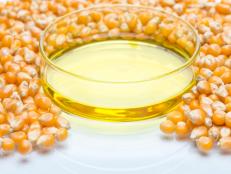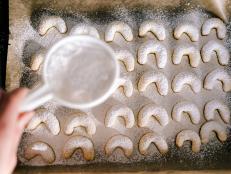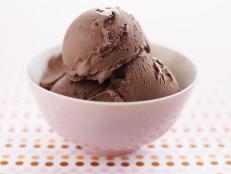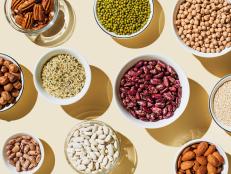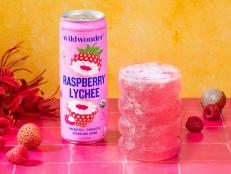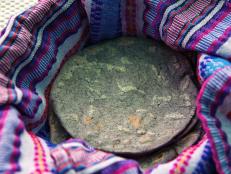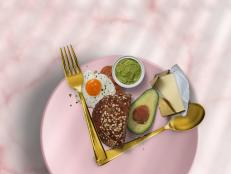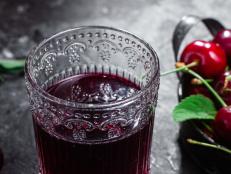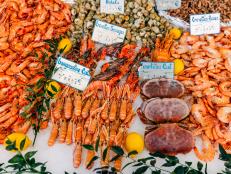What's the Difference Between Sugar and High Fructose Corn Syrup?
How well do you know the sweet stuff?
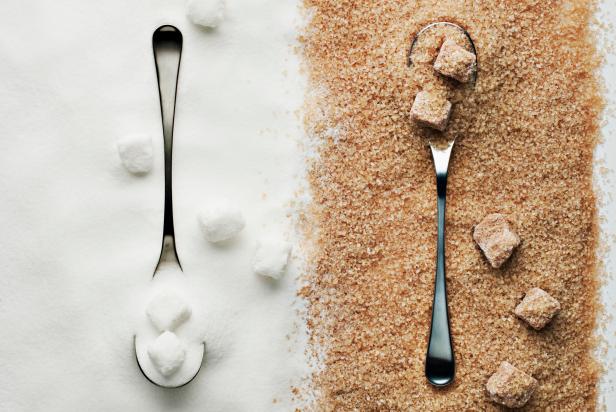
Martin Barraud / Getty
Sugar is sweet. And it should make us smile. It certainly makes babies smile to taste sugar – probably because they haven’t read any of the news about how it’s supposed to be so terrible for us.
But not all sugar is added to foods just to make a sweet treat. Sugar has many important functional roles in healthy foods beyond sweetness.
- Maintains the freshness and viability of probiotics in yogurt
- Facilitates fermentation in sauerkraut and pickles
- Feeds yeast in crusty artisanal bread, as well as whole grain sandwich bread
- Keeps whole grain cereals from turning an unappetizing grey color
- Adds a smooth mouth-feel to dressings for green salads
- Preserves foods to prevent harmful microbes from growing in jarred pasta sauces, and canned fruits and vegetables
- Ferments red wine
And of course, sugar is added just to make some make some healthy foods more delicious. Think: dried cranberries, dried tart cherries, flavored kefir, and a bowl of oatmeal with a sprinkle of sugar.
But it’s also true that most of us eat too many added sugars. Added sugars are not the kind found naturally in fruits, vegetables and dairy foods.
Two of the most popular types of added sugars are cane sugar and high fructose corn syrup. Here’s a breakdown of the difference between them:
Cane Sugar
Cane sugar is any sugar that comes from the sugar cane plant. Sugar cane is a tropical grass that grows 10-20 feet high. Four US states produce sugar cane: Florida, Hawaii, Louisiana and Texas. A stalk of the sugar cane plant contains 12-14% sucrose.
The process of separating sugar from the sugar cane plant is accomplished by grinding the cane to extract the sweet juice, boiling this juice to thicken it, and spinning the thick molasses syrup in a centrifuge to produce “raw sugar.” From there, you get several types of sugar.
- Muscovado sugar – This is raw sugar in which the molasses has not been removed, so it’s moist and sticks together. It’s also known as Barbados sugar and is a darker brown color.
- Turbinado sugar – Lighter in color than muscovado, this is raw sugar in which some of the molasses and nearly all the moisture have been removed to produce a natural brown-blond colored sugar. It’s what’s in your little brown packet of “raw cane sugar” and is also called demerara sugar.
- Pure cane sugar – When all of the molasses is spun out of raw sugar, naturally white sugar crystals are left behind. This refined sugar can be labeled as “sugar,” “cane sugar” or “pure cane sugar.”
As an aside, the sugar we find in our pantries is extracted from either sugar cane or sugar beets grown on farms. The sugar from beet and cane is identical. Sugar extracted from sugar beets can be labeled as “sugar” or “beet sugar,” but not “cane sugar”.
High Fructose Corn Syrup (HFCS)
HFCS is manufactured from corn starch. An enzyme is used to develop a sweet syrup that’s evaporated into a clear and colorless glucose syrup; some of the syrup is then further processed to a sweeter fructose, which is then added back into the glucose syrup. High fructose corn syrup is used to sweeten a variety of soda, beverages, sauces, salad dressings, condiments, baked goods, canned fruits, candy, desserts and other shelf-stable foods.
Researchers have shown associations between drinking beverages sweetened with HFCS or sugar can increase blood pressure and some risk factors for heart disease. However, at this time, there is no clear conclusion that HFCS is any worse than other added sugars. Regardless, the Corn Refiners Association has proposed, but so far been denied changing the HFCS name to corn sugar.
Added Sugars
HFCS, raw cane sugar, white sugar and all sugars are all considered added sugars. Each has 4 calories per gram. Sugar and HFCS all also have about 15 calories per teaspoon.
It’s recommended that we get no more than 10% of our calories from added sugars – that’s 200 calories on a 2,000 calorie diet – or 50 grams. If you eat less than 2,000 calories per day, aim for less than 40 grams per day.
To get an idea of how many grams of added sugar your family eats, take a look at the “added sugars” line on food packages and keep a running total for a day or two. Not all food packages have the “added sugars” line in the Nutrition Facts panel, yet, but they will eventually. Most food companies have the new label design of the Nutrition Facts panel. By 2021, all companies including smaller companies will need to include the new Facts panel on all food packaging.
Related Links:
Serena Ball, MS, RD is a registered dietitian nutritionist, food writer, and recipe developer. She blogs at TeaspoonOfSpice.com and is the author of the best-selling The 30-Minute Mediterranean Diet Cookbook. Follow her @TspCurry on Twitter and Instagram.




























